Could selling warships abroad break BAE's dominance?

In the shadow of the Forth Road Bridge in Scotland, lie the centrepieces of the Royal Navy’s future power.
Aircraft carrier HMS Queen Elizabeth is tied up alongside at the Rosyth Dockyard as final fitting work is carried out ahead of sea trials, and taking shape in the dry dock is HMS Prince of Wales, the second vessel in the class.
While both were put together at Rosyth, neither was truly born there. Instead, they started out as “blocks” fabricated from scratch in shipyards around the country. These huge sections were then towed to Rosyth and assembled into 65,000-tonne ships by workers from BAE Systems, Babcock and Thales who make up the Aircraft Carrier Alliance in partnership with the Ministry of Defence.
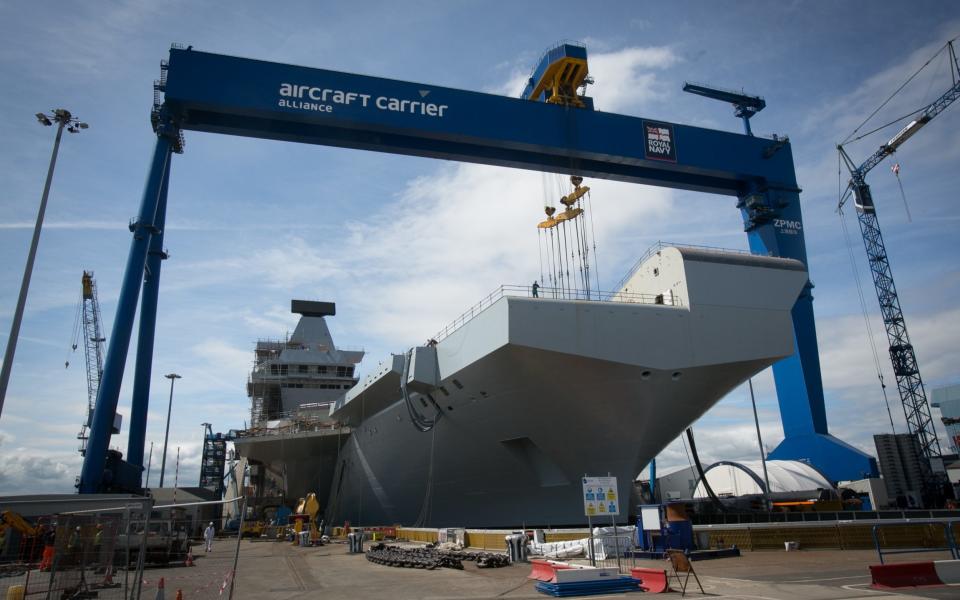
Although the partnership agreement was a political carve-up and costs of the carriers soared, eventually almost doubling to £6.2bn partly because of government’s flip-flopping over the design, the actual construction work has gone remarkably well.
Despite being built sometimes hundreds of miles apart - at Glasgow, Appledore in Devon, Hebburn in Tyneside, Birkenhead in Merseyside, and Portsmouth - the blocks have slotted together and the project is on course with the first carrier due to enter service in 2020.
“If you asked me 10 years ago if such a system could work, I’d have said no,” says Paul Stott, senior lecturer in naval architecture at Newcastle University. “But it’s worked almost perfectly.”
It’s unlikely any company involved in the carriers would admit the job was too big for them alone, but the scale of the carriers - not to mention political considerations - necessitated the joined-up approach.
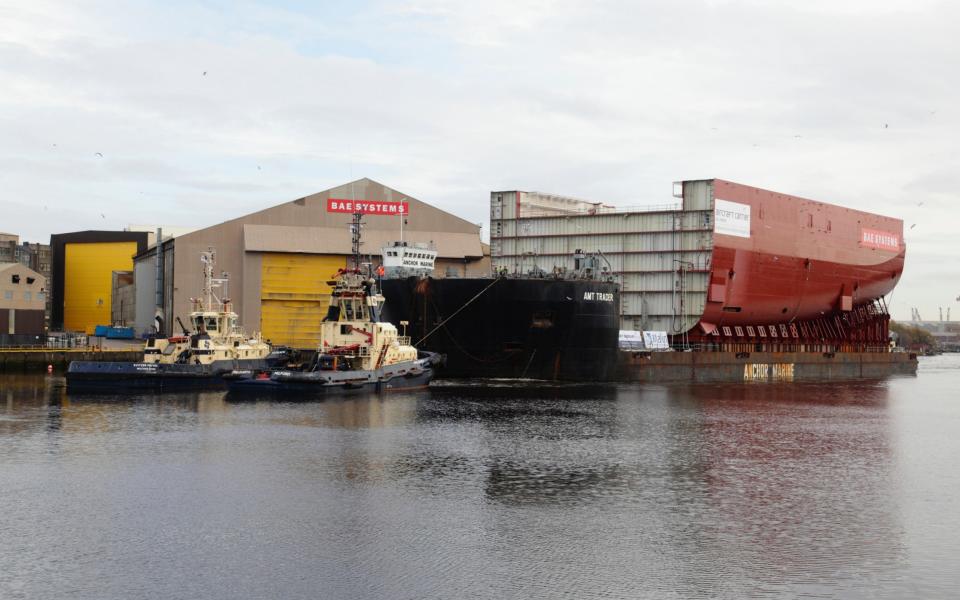
Now that format’s success could be emulated in a move that could end BAE’s virtual monopoly on building Royal Navy warships. The defence giant has signed early agreements to build eight 6,000 tonne Type 26 frigates at its Clyde shipyards with work expected to begin later this year.
Originally, it was expected that 13 of these ships would be built but this number was cut with the government instead talking about building “stripped down” version of the ship, known as the Type 31. As well as the prospect of these cheaper ships being used to bolster the fleet, the design would also be marketed to foreign buyers as part of the government’s “prosperity agenda” with British defence spending and military expertise being used to boost the national economy and generate work.
It’s these Type 31 ships that could see BAE’s grip on building warships ease. A government commissioned report last year by industrialist Sir John Parker recommended using what he called the “virtual shipbuilding” model pioneered on the carriers to increase efficiency and boost smaller shipyards who would otherwise be excluded from such work.
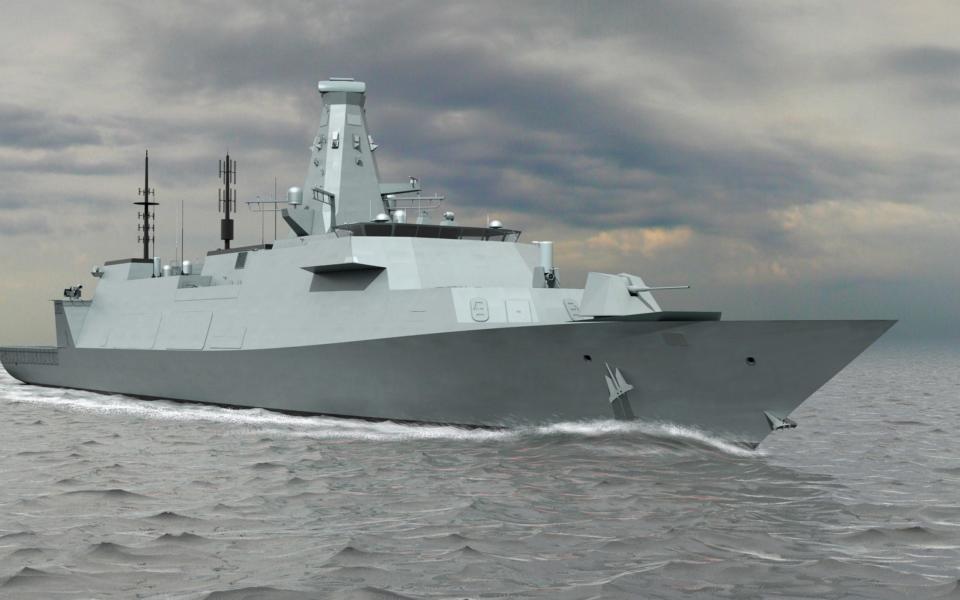
Although trained naval architect Sir John’s “independent report to inform the UK national shipbuilding strategy” got a cool reception from Whitehall at the time, it has been picked up by the Conservative manifesto.
Citing the recent successes of Britain’s advanced manufacturing, aerospace and automotive industries, the manifesto said the party “wants to replicate that in other sectors – like shipbuilding where, for the first time in decades, there is the prospect of a renaissance.
“We will take forward Sir John Parker’s review, helping our shipyards modernise and collaborate. We want to see shipbuilding growing on the Clyde and on the Forth, in Belfast and in Barrow, and in the north-east and south of England”.
One company likely to benefit from spreading the work around is Babcock. Its Appledore yard in Devon built 1,000 tonne bow sections for the carrier and chief executive Archie Bethel says there is no reason why the company can’t take a slice of work away from BAE.
“The concept is certainly viable as we showed with the carriers,” he said, though added the FTSE 100 company does not currently have building frigates in its plans as he’s “not convinced the funding for them is in place”.

Still, Bethel is positive about the concept, adding: “The Parker report showed up the significant advantages and economies of not having to build up huge workforces in one place.”
However, he warned that the idea Babcock can suddenly take over from BAE and build entire warships is “just wrong”.
Building up shipyards to break the dependence on BAE might make good strategic sense for the government, though. The defence giant focused its shipbuilding work at its Clyde yards after a deal with MoD in 2013 under which is cut 1,800 staff, mainly at Portsmouth, the historic home of the Navy.
Back when this was agreed the Scottish referendum was expected to be a non-event. However, as the prospect of an independent Scotland increased during campaigning for the 2014 vote, alarm bells started ringing.
Government and BAE chiefs refused to give a direct answer about whether secession would mean the company’s yards north of the border closing, but Ministers parroted the line that “British warships will be built in Britain” and the areas around the Clyde yards were a focus of pro-Union campaigning.
Getting yards across the UK used to building warships again is logical though, especially with Scottish secession never far from the Scottish National Party’s mind.
“It’ll never be admitted, but if they knew what a threat the referendum was, the carriers would never have been built in Scotland,” said one defence insider, adding that focus on the Clyde might be a strategic error.
Still, BAE is confident of its position building the fleet, noting as well as the eight Type 26 frigates, the government has committed to building five offshore patrol vessels (OPVs) in its yards, part of a deal to keep skills alive that would otherwise die without work.
“Given our unique capabilities in UK complex warship design and build, we are confident we'll continue to play a central role in future Royal Navy shipbuilding programmes,” the company said.
But smaller players are more than ready to step up. John Syvret, chief executive of A&P Group, which has yards across the UK including the Birkenhead-based Cammell Laird, is passionate about the Parker report.
“Sir John is a highly credible figure in the industry and his report did an exceptional job of assessing what’s available and gave the commercial sector a thumbs up,” Syvret said.
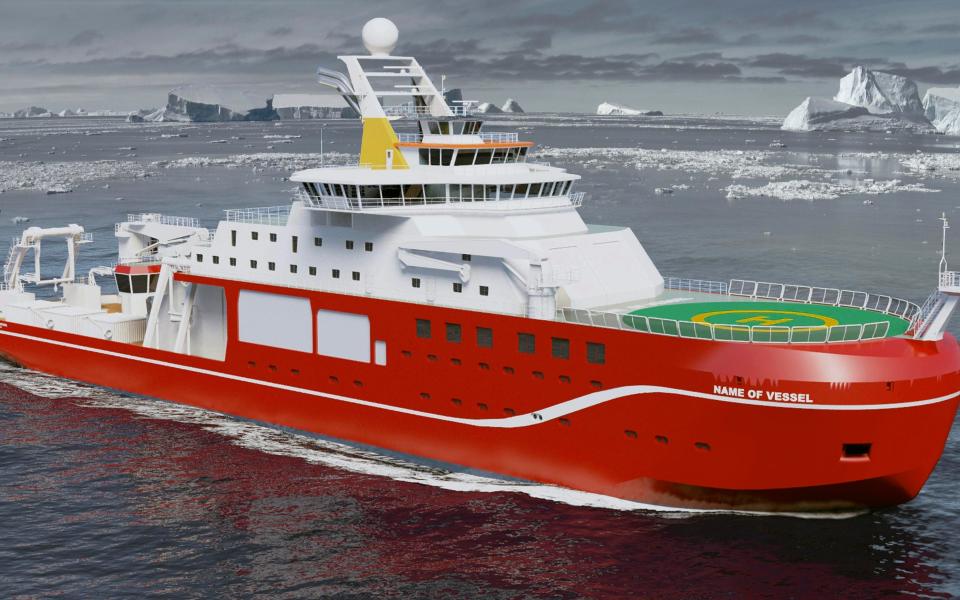
Suggestions that yards which have not entirely built highly complex warships in decades are wrong, he said. “We’re building RSS Sir David Attenborough at Cammells and that’s about as advanced a ship as you can get,” he said, referring to the new polar research ship which made waves after a online campaign to have it named Boaty McBoatface.
Future construction of warships is likely to be in partnership with BAE, Syvret believes.
“It’s very important we maintain indigenous shipbuilding capacity. For BAE to build two types at one the 26 and the 31 is hard but but working together we can maintain that capacity,” he said.
Spreading the work around will create a shipbuilding industry able to “flex” to military demand, the A&P chief thinks, with export sales of the Type 31 helping that.
“Britain has the most advanced warships afloat in the Type 45 destroyers and other nations see that expertise,” he said, adding there are “hundreds of millions” in potential export opportunities for the ships.
“If we can maintain skills and capacity by building Type 31s for export customers that are modified to their specifications when there we are not engaged in domestic naval programmes that has got to be a good thing.”

And BAE should not be afraid of rivals threatening to take work from it. “Competition is always good for the industry,” he said. “We can be building ships for the export market and ready to step in when the MoD needs us to deliver programmes for the Navy.”
Across the Irish Sea, Harland and Wolff’s yards are also ready to turn out warships once again.
“We’ve diversified into areas such as oil and gas and renewable energy but the skills are still here,” says David McVeigh, general sales manager at the Belfast-based business. “Now we’re building 20,000 tonne ‘jackets’ for offshore wind turbines so we can certainly handle ships of that size. As for complexity, the degree of sophistication of what we are building now is extraordinary in its own way.”
McVeigh also welcomed the Parker report and its reference in the manifesto. “It’s not spreading work just for the sake of spreading it,” he said. “They’ve seen the strengths the commercial sector has to offer and it’s clear they have listened to Sir John.”
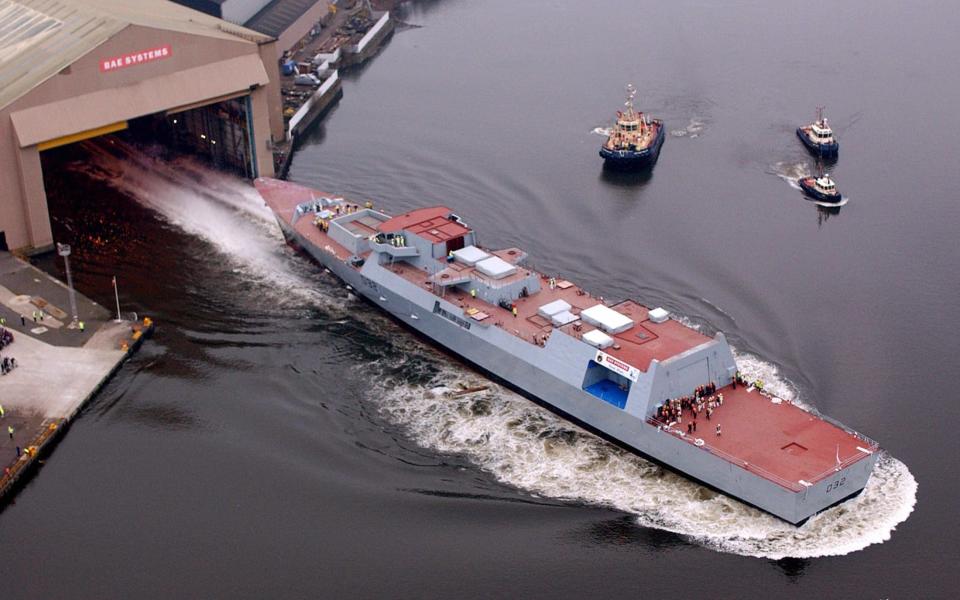
A massive amount of experience has been gained from building the Queen Elizabeth-class aircraft carriers that shows that work does not have to be focused on a single company, according to Stott. This dispersed system also comes with economic benefits, he adds.
“While it might not be the optimal way of doing it, the penalty is not that big,” he said. “But establishing a large yard dependent on building warships comes with huge penalties for government - it sits there demanding work all the time that may not be there.”
Lessons have been learnt from this in the past. The Astute nuclear submarines built by BAE at Barrow were late and fraught with hitches, as the skills to build these vessels disappeared after a long gap in submarine construction. This is part of the reason for the OPVs being built as “busy work”, and the Dreadnought Trident replacement submarines programme overlapping with the the Astute class.
However, trying to keep these skills alive was also part of the cause of the government’s worries about the Scottish focus on building warships: expertise was consolidated around the Clyde rather than having yards dotted around the country that could be standing idle.
It seems that unless the Type 31s are an export success, BAE’s dominance will remain.
“We are an island nation and need a strategic shipbuilding capability,” says Stott, who is unsure whether foreign nations will be lining up to buy the planned vessels. “But for any country that has the capability to build such ships, it would be rare if they were to buy them from abroad.”

